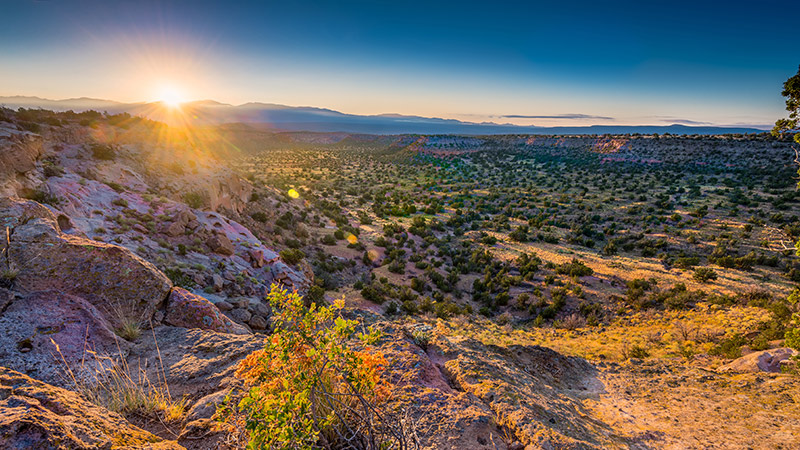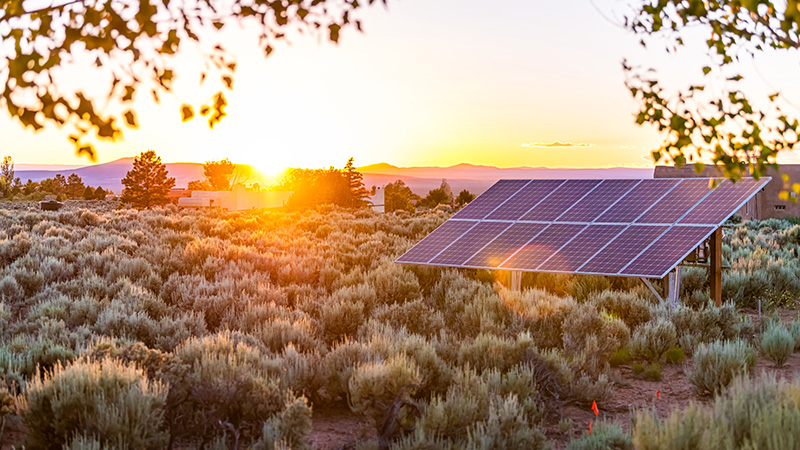March 7, 2024
This legislative session, New Mexico positioned itself as a leader in the Interior West, taking major strides in conservation, outdoor equity, and clean energy.
New Mexico fully funded the Land of Enchantment Legacy Fund with an investment of $300 million.
Thanks to the tireless work of advocates and legislative champions in New Mexico, the Land of Enchantment Legacy Fund is now self-sustaining for generations to come.
Established last legislative session, the Fund is New Mexico’s first dedicated state trust for conservation. The historic conservation trust is designed to provide critical resources to projects that protect our land and water, encourage equitable outdoor recreation, preserve historical and cultural sites, and support agricultural and rural communities. It supports critical programs in our communities that already exist but have typically been underfunded or only funded sporadically.
The Fund needed at least $350 million to generate enough annual returns to be self-sustaining, withstand economic downturns, and access hundreds of millions of federal matching dollars. With the additional $300 million investment that New Mexico approved this session, the Fund will ensure that communities across the state can enjoy the unparalleled beauty of the Land of Enchantment for generations to come.

New Mexico invested in accessible, equitable and impactful outdoor infrastructure.
The Land and Water Conservation Fund Changes bill helps New Mexico build the foundation for an accessible, equitable, and impactful LWCF program in the state.
Research shows that time spent in nature has positive physical, mental, and spiritual health outcomes and reduces overall stress and anxiety. Communities with access to quality outdoor infrastructure are also more prosperous – in part because outdoor recreation is a significant economic driver. In 2022, the outdoor recreation industry created $2.4 billion in value added for New Mexico and accounts for 1.9% of state GDP, including nearly 28,000 jobs.
The Land Water and Conservation Fund (LWCF) is one of the most successful conservation and recreation programs of the past half-century. Since its inception in 1965, more than $50 million in federal LWCF funding has supported over 1,200 outdoor recreation projects in all 33 counties in New Mexico – everything from city parks to open space, trails, rodeo grounds and ball fields. This bill will:
- Improve access to funding for Tribal and rural communities by updating the incorporated municipality population cap from 15,000 to 65,000 people.
- Ensure that New Mexico State Parks are eligible for a 7% federal match to help administer the program.
This is a big step forward to enhancing outdoor recreational opportunities for all New Mexicans, in every corner of the state.
The Land and Water Conservation Fund (LWCF) Supplemental Fund has been modernized to bring outdoor recreation closer to home for more New Mexicans, with a focus on Tribal and rural communities. This initiative aims to build parks, conserve lands and create access to the outdoors – benefiting communities across the state.
However, to fully realize its potential, we need state funding.
A $10 million appropriation was stripped from the bill and advocates are now calling on New Mexico state legislators to find a dedicated source of funding in the 2025 legislative session.

New Mexico’s largest provider of electricity adopted a strong transportation electrification plan.
The Public Service Company of New Mexico (PNM) adopted a strong transportation electrification plan that includes $35 million for a variety of uses, including streamlining their program design to make incentives easier for customers to use. The plan focuses on reaching low-income and underserved New Mexican communities and demonstrates how utilities can play a significant role in making zero-emission vehicles accessible to all communities.
The health and financial benefits of zero-emission vehicles (ZEVs) are clear, but more EV charging and assistance for low-income communities is essential to encourage rapid, equitable adoption of this technology. PNM’s plan promotes the benefits of ZEVs, reduces vehicle costs for low-income buyers, makes the installation of chargers easier, and creates rebates for zero-emission cars and e-bikes.



